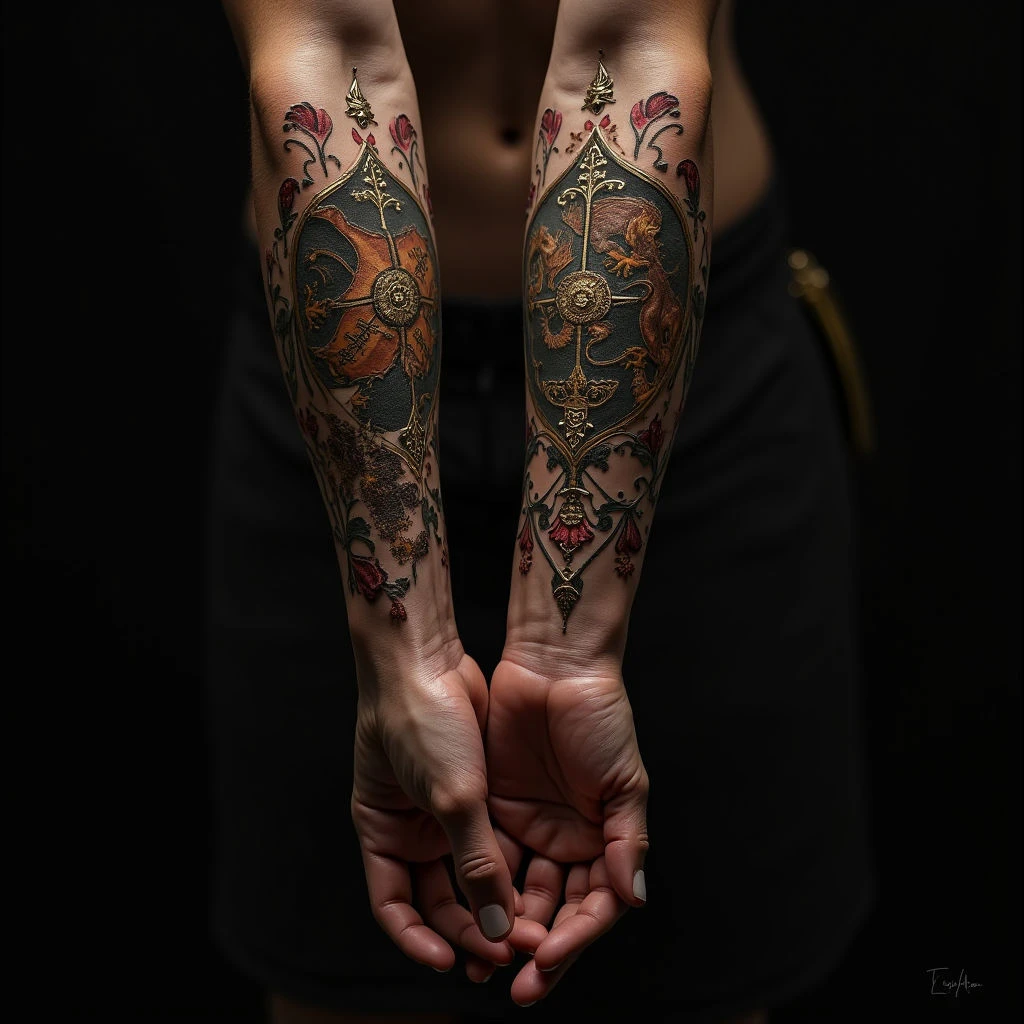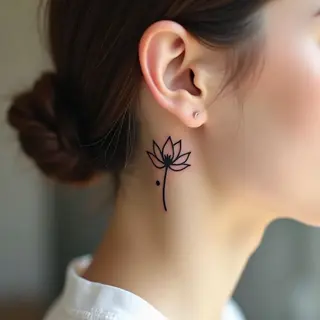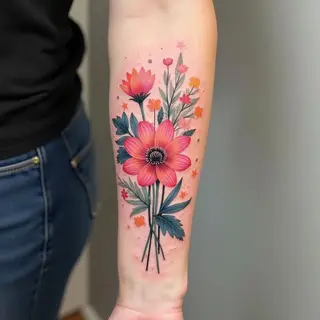Medieval Artistry: A Tattoo Canvas
The human form, a canvas for storytelling across ages, lends itself particularly well to the display of intricate artwork. The arm and hand, with their expansive surface area, offer an ideal space for elaborate designs drawn from historical European artistry, especially those found within illuminated manuscripts and heraldic tradition.
Drawing Inspiration from the Medieval Period
The medieval period is a treasure trove of inspiration. Imagine incorporating elements from a family's coat of arms – the colors (tinctures), symbols (charges like lions or fleurs-de-lis) all carrying layered meanings reflecting lineage and values.
Heraldic Motifs on Skin
A hand could be rendered depicting a scene from a manuscript, perhaps illustrating a passage from chivalric romances or tales of saints. The placement allows for dynamic composition, drawing the eye across the surface to reveal further layers of detail.
Illuminated Letters and Marginalia
Illuminated letters themselves present an exceptional motif. Each letter can be meticulously crafted with intricate detailing – gold leaf accents, delicate borders drawn from the marginalia that adorned these manuscripts.
Bestiaries and Symbolic Creatures
Bestiaries, collections of fantastical creatures imbued with symbolic meaning, offer another avenue for design. A hand could depict a griffin – representing vigilance and boldness – or a phoenix rising from ashes, symbolizing renewal.
Consider how the design interacts with the natural contours of the body; it’s more than just decoration—it's a tangible link to a bygone era and a testament to the skill of medieval artisans.


